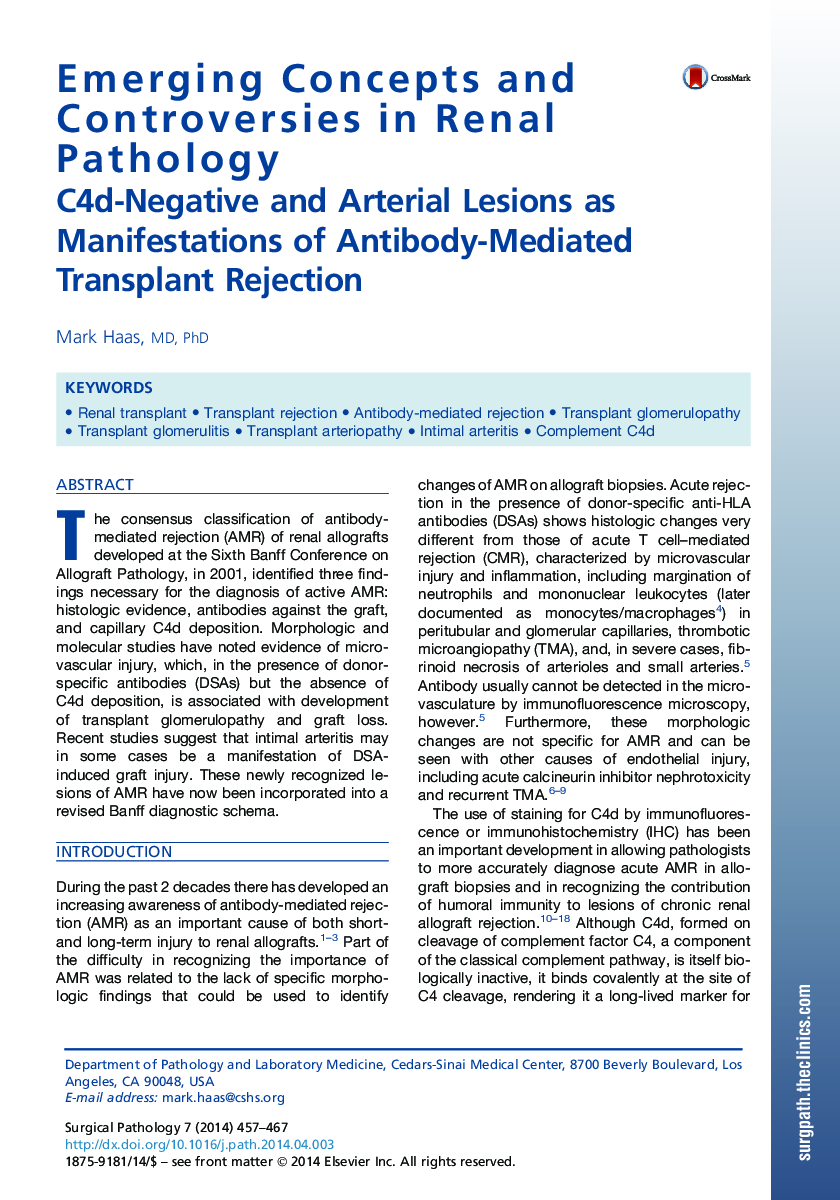| Article ID | Journal | Published Year | Pages | File Type |
|---|---|---|---|---|
| 3334433 | Surgical Pathology Clinics | 2014 | 11 Pages |
The consensus classification of antibody-mediated rejection (AMR) of renal allografts developed at the Sixth Banff Conference on Allograft Pathology, in 2001, identified three findings necessary for the diagnosis of active AMR: histologic evidence, antibodies against the graft, and capillary C4d deposition. Morphologic and molecular studies have noted evidence of microvascular injury, which, in the presence of donor-specific antibodies (DSAs) but the absence of C4d deposition, is associated with development of transplant glomerulopathy and graft loss. Recent studies suggest that intimal arteritis may in some cases be a manifestation of DSA-induced graft injury. These newly recognized lesions of AMR have now been incorporated into a revised Banff diagnostic schema.
